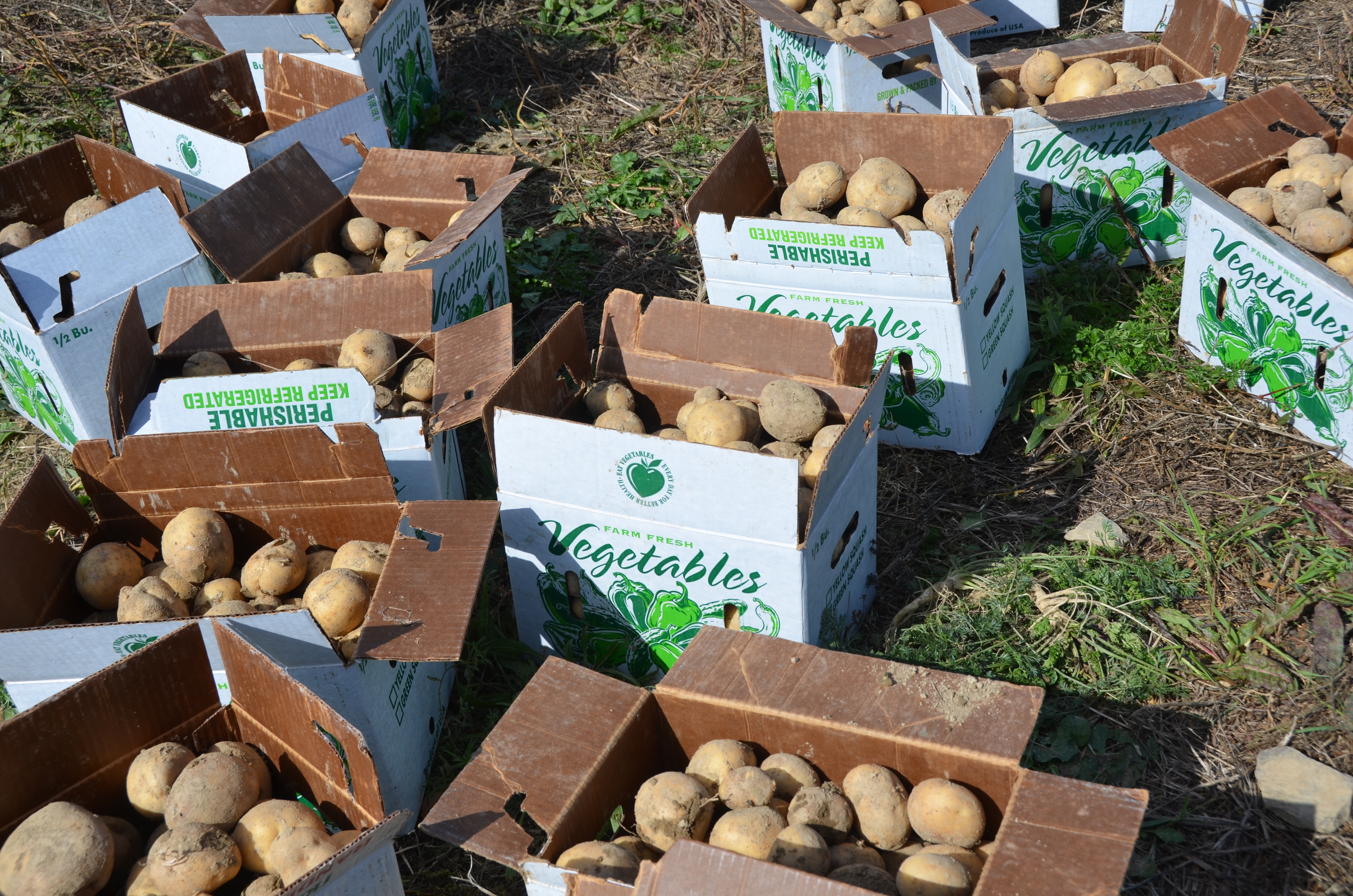Local Ithaca youth groups fight hunger with healthy food programs

Photo by Elizabeth Morris
America has a secret. It may be the seventh richest country in the world, but millions of children go hungry, even those in Ithaca, New York. According to citydata.com, 55.6 percent of Ithaca residents were below the poverty level in 2009. The average poverty rate for New York state is 18.2 percent, making Ithaca’s poverty rate about 37 percent higher than the state average. According to the book Breakthrough Communities, children dealing with hunger are more likely to have problems in school, to develop health issues and to drop out of high school.
Ithaca community programs, such as the Southside Community Center, Greater Ithaca Activities Center and Youth Farm, all have incorporated programs to counteract hunger in youth, while simultaneously teaching children about sustainable foods.
The Youth Farm grows organic foods and sells them at conventional prices, making food affordable for public schools and other health programs. Most of the food goes to the Ithaca City School District and other after school programs. The Fresh Fruit and Vegetable Snacks Program at Beverly J. Martin Elementary School provides at least one fresh fruit or vegetable snack a day to every child in the school.
The Youth Farm program comprises about 25 students and five supervisors. Students work with seed trays, planting, weeding and harvesting. Youth Farm helps to “provide an environment where people can have honest conversations and feedback with each other,” said Joseph Amsili, Youth Farm program coordinator. Students also get paid through the Youth Employment Agency, this often being their first work experience.
GIAC provides teenagers with valuable work experience while teaching them about healthy foods. Ithaca College junior Elly Linares started volunteering with GIAC in 2011, and now helps run programs that take high schools students struggling in the traditional academic setting and teaches them about farming. “They get to see how you plant the seed, the seed grows into a vegetable, you eat the vegetable, you digest it, it exits and then it fertilizes,” Linares said. “So just that full circle really helps them see how there actions now affect the things later. That’s why we mainly do farming.”
Two days a week students make up course work they may be struggling with in a more academic setting with access to computers. As a result, this program gives them both work experience and academic credit.
The Southside Community Center is one of the most influential programs in combating hunger in Ithaca. Nagiane Lacka, program manager, said Southside’s main goals are to “be able to feed the most children” and to “initiate healthy food choices and increase the intake of fruit and vegetables for families, not just the children.”
Educating families about healthy choices and directing them towards affordable, healthy food choices in Ithaca not only feeds children, but also teaches them good habits for the future.
To help children eat healthy foods, Southside Community Center provides a place for children to come in and grab a meal in a comforting and welcoming environment. For families that may not be able to afford three meals a day, the center serves breakfast, lunch and dinner during the summer, and just dinner during the school year. The program serves fresh food and the menu varies depending on what food is in season.
Southside works to increase children’s intake of fruits and vegetables through pairing new healthy foods with other food choices kids generally already like and recognize, requiring each child to try their new vegetables before eating the other well-known food.
Lacka said that the program changed her own views on children’s taste.
“Just this past week, our nutrition and fitness coordinator and assistant made a white bean and vegetable soup, and that seemed very adult to me,” Lacka said. “It seemed like something upper middle class, white adults would eat, and the kids ate it up without question.”
Southside serves 57 people for dinner a night during the fall and 60 to 100 for breakfast, lunch and dinner in the summer. These meals are open to everyone, of all ages and races. In addition, Southside’s food pantry supplies 59 people per month.
Southside’s partnership with Gardens 4 Humanities helps educate the children in addition to feeding them. Every week Gardens 4 Humanities visits Southside where they go out into the garden to learn about food and where it comes from.
According to the nonprofit organization Share Our Strength, one in five children live with hunger in the U.S. In Ithaca, the community has responded to this issue by both feeding children and teaching them about healthy, organic foods with the goal that they will apply their knowledge to their home life and change the cycle of poor eating habits.
“It’s both establishing community and making sure that kids are healthy,” said Lacka.
Elizabeth Morris is a freshman journalism major that wishes she had a farm, E-I-E-I-O! Email her at emorris3[at]ithaca[dot]edu.
